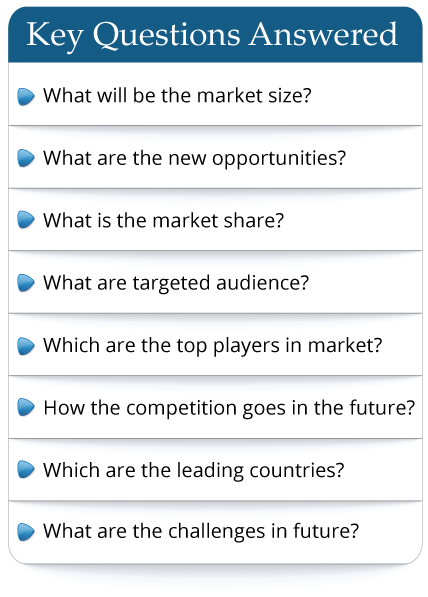Actuators are like the "muscles" of a robot, the parts which convert stored energy into movement. By far the most important actuators are electric motors that spin a wheel or gear that control industrial robots in factories or serving people in households and public.
The global Motors for Robots market was valued at US$ 12960 million in 2023 and is anticipated to reach US$ 16920 million by 2030, witnessing a CAGR of 3.8% during the forecast period 2024-2030.
Global Motor for Robots key players include Panasonic, Yaskawa, Nidec, Beckhoff , Lenze, etc. Global top five players hold a share about 50%.Europe is the largest market, with a share about 40%, followed by Japan and North America, having a total share about 50 percent.In terms of product, Continuous DC is the largest segment, with a share about 60%. And in terms of application, the largest application is Service, followed by Industrial.
This report aims to provide a comprehensive presentation of the global market for Motors for Robots, with both quantitative and qualitative analysis, to help readers develop business/growth strategies, assess the market competitive situation, analyze their position in the current marketplace, and make informed business decisions regarding Motors for Robots.
Report Scope
The Motors for Robots market size, estimations, and forecasts are provided in terms of output/shipments (K Units) and revenue ($ millions), considering 2023 as the base year, with history and forecast data for the period from 2019 to 2030. This report segments the global Motors for Robots market comprehensively. Regional market sizes, concerning products by Type, by Application, and by players, are also provided.
For a more in-depth understanding of the market, the report provides profiles of the competitive landscape, key competitors, and their respective market ranks. The report also discusses technological trends and new product developments.
The report will help the Motors for Robots manufacturers, new entrants, and industry chain related companies in this market with information on the revenues, production, and average price for the overall market and the sub-segments across the different segments, by company, by Type, by Application, and by regions.
Market Segmentation
By Company
Rockwell Automation
Mitsubishi Electric Corporation
Fanuc Corporation
Siemens
Yaskawa
Nidec Corporation
Shinano Kenshi
MinebeaMitsumi Inc
Haydon Kerk Motion Solutions
Oriental Motor
Panasonic
Mechtex
Anaheim Automation
ElectroCraft
Nanotec Electronic
Kollemorgen
TECO Electro Devices
Changzhou Leili Electrical Appliances
Moons
Moog
Bosch Rexroth AG
ABB
Delta
Parker Hannifin
Beckhoff
Fengyuan Micro & Special Motors
Jiangxi Jiangte Electrical Group
Changzhou Baolai Electric Appliance
Changzhou Hetai Motor & Electr
Changzhou Chuangwei Motor & Electric Apparatus
Schneider
SANYO DENKI
Teco
Segment by Type
DC Motor
Servo Motor
Stepper Motor
Segment by Application
Industrial Robot
Special Robot
Production by Region
North America
Europe
China
Japan
Consumption by Region
North America
United States
Canada
Europe
Germany
France
U.K.
Italy
Russia
Asia-Pacific
China
Japan
South Korea
China Taiwan
Southeast Asia
India
Latin America, Middle East & Africa
Mexico
Brazil
Turkey
GCC Countries
Chapter Outline
Chapter 1: Introduces the report scope of the report, executive summary of different market segments (by region, by Type, by Application, etc), including the market size of each market segment, future development potential, and so on. It offers a high-level view of the current state of the market and its likely evolution in the short to mid-term, and long term.
Chapter 2: Detailed analysis of Motors for Robots manufacturers competitive landscape, price, production and value market share, latest development plan, merger, and acquisition information, etc.
Chapter 3: Production/output, value of Motors for Robots by region/country. It provides a quantitative analysis of the market size and development potential of each region in the next six years.
Chapter 4: Consumption of Motors for Robots in regional level and country level. It provides a quantitative analysis of the market size and development potential of each region and its main countries and introduces the market development, future development prospects, market space, and production of each country in the world.
Chapter 5: Provides the analysis of various market segments by Type, covering the market size and development potential of each market segment, to help readers find the blue ocean market in different market segments.
Chapter 6: Provides the analysis of various market segments by Application, covering the market size and development potential of each market segment, to help readers find the blue ocean market in different downstream markets.
Chapter 7: Provides profiles of key players, introducing the basic situation of the main companies in the market in detail, including product production/output, value, price, gross margin, product introduction, recent development, etc.
Chapter 8: Analysis of industrial chain, including the upstream and downstream of the industry.
Chapter 9: Introduces the market dynamics, latest developments of the market, the driving factors and restrictive factors of the market, the challenges and risks faced by manufacturers in the industry, and the analysis of relevant policies in the industry.
Chapter 10: The main points and conclusions of the report.
The global Motors for Robots market was valued at US$ 12960 million in 2023 and is anticipated to reach US$ 16920 million by 2030, witnessing a CAGR of 3.8% during the forecast period 2024-2030.
Global Motor for Robots key players include Panasonic, Yaskawa, Nidec, Beckhoff , Lenze, etc. Global top five players hold a share about 50%.Europe is the largest market, with a share about 40%, followed by Japan and North America, having a total share about 50 percent.In terms of product, Continuous DC is the largest segment, with a share about 60%. And in terms of application, the largest application is Service, followed by Industrial.
This report aims to provide a comprehensive presentation of the global market for Motors for Robots, with both quantitative and qualitative analysis, to help readers develop business/growth strategies, assess the market competitive situation, analyze their position in the current marketplace, and make informed business decisions regarding Motors for Robots.
Report Scope
The Motors for Robots market size, estimations, and forecasts are provided in terms of output/shipments (K Units) and revenue ($ millions), considering 2023 as the base year, with history and forecast data for the period from 2019 to 2030. This report segments the global Motors for Robots market comprehensively. Regional market sizes, concerning products by Type, by Application, and by players, are also provided.
For a more in-depth understanding of the market, the report provides profiles of the competitive landscape, key competitors, and their respective market ranks. The report also discusses technological trends and new product developments.
The report will help the Motors for Robots manufacturers, new entrants, and industry chain related companies in this market with information on the revenues, production, and average price for the overall market and the sub-segments across the different segments, by company, by Type, by Application, and by regions.
Market Segmentation
By Company
Rockwell Automation
Mitsubishi Electric Corporation
Fanuc Corporation
Siemens
Yaskawa
Nidec Corporation
Shinano Kenshi
MinebeaMitsumi Inc
Haydon Kerk Motion Solutions
Oriental Motor
Panasonic
Mechtex
Anaheim Automation
ElectroCraft
Nanotec Electronic
Kollemorgen
TECO Electro Devices
Changzhou Leili Electrical Appliances
Moons
Moog
Bosch Rexroth AG
ABB
Delta
Parker Hannifin
Beckhoff
Fengyuan Micro & Special Motors
Jiangxi Jiangte Electrical Group
Changzhou Baolai Electric Appliance
Changzhou Hetai Motor & Electr
Changzhou Chuangwei Motor & Electric Apparatus
Schneider
SANYO DENKI
Teco
Segment by Type
DC Motor
Servo Motor
Stepper Motor
Segment by Application
Industrial Robot
Special Robot
Production by Region
North America
Europe
China
Japan
Consumption by Region
North America
United States
Canada
Europe
Germany
France
U.K.
Italy
Russia
Asia-Pacific
China
Japan
South Korea
China Taiwan
Southeast Asia
India
Latin America, Middle East & Africa
Mexico
Brazil
Turkey
GCC Countries
Chapter Outline
Chapter 1: Introduces the report scope of the report, executive summary of different market segments (by region, by Type, by Application, etc), including the market size of each market segment, future development potential, and so on. It offers a high-level view of the current state of the market and its likely evolution in the short to mid-term, and long term.
Chapter 2: Detailed analysis of Motors for Robots manufacturers competitive landscape, price, production and value market share, latest development plan, merger, and acquisition information, etc.
Chapter 3: Production/output, value of Motors for Robots by region/country. It provides a quantitative analysis of the market size and development potential of each region in the next six years.
Chapter 4: Consumption of Motors for Robots in regional level and country level. It provides a quantitative analysis of the market size and development potential of each region and its main countries and introduces the market development, future development prospects, market space, and production of each country in the world.
Chapter 5: Provides the analysis of various market segments by Type, covering the market size and development potential of each market segment, to help readers find the blue ocean market in different market segments.
Chapter 6: Provides the analysis of various market segments by Application, covering the market size and development potential of each market segment, to help readers find the blue ocean market in different downstream markets.
Chapter 7: Provides profiles of key players, introducing the basic situation of the main companies in the market in detail, including product production/output, value, price, gross margin, product introduction, recent development, etc.
Chapter 8: Analysis of industrial chain, including the upstream and downstream of the industry.
Chapter 9: Introduces the market dynamics, latest developments of the market, the driving factors and restrictive factors of the market, the challenges and risks faced by manufacturers in the industry, and the analysis of relevant policies in the industry.
Chapter 10: The main points and conclusions of the report.
Frequently Asked Questions
This market study covers the global and regional market with an
in-depth analysis of the
overall growth prospects...
- By product type
- By End User/Applications
- By Technology
- By Region
The report provides a detailed evaluation of the market by
highlighting information on
different aspects including drivers, restraints...

 Pre-order Enquiry
Pre-order Enquiry Download Free Sample
Download Free Sample












